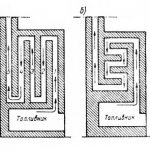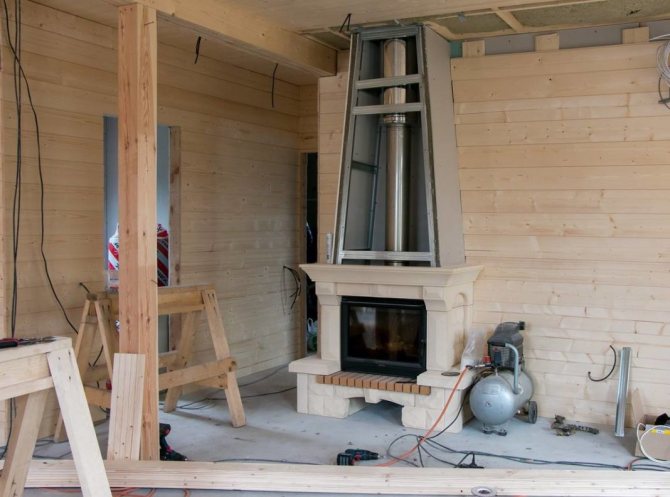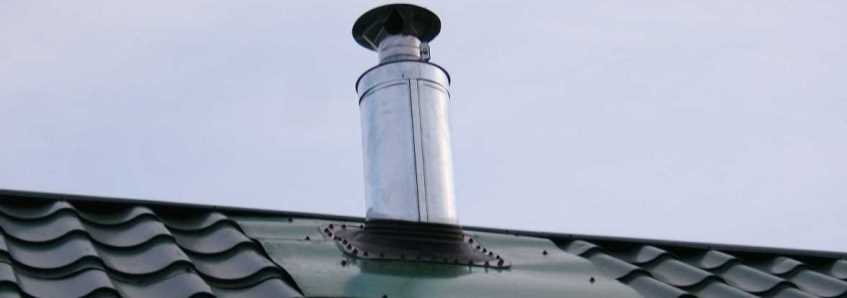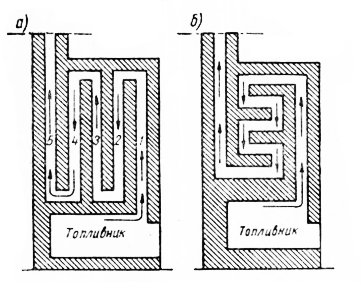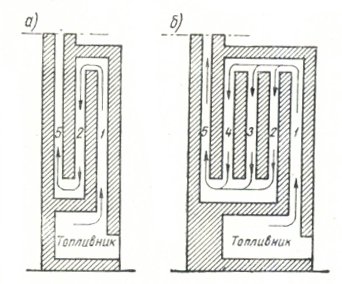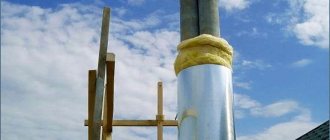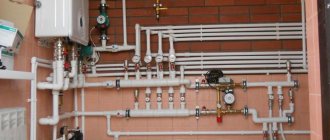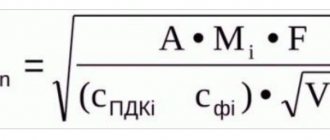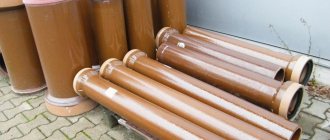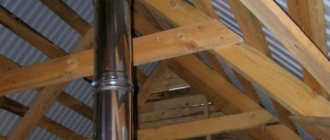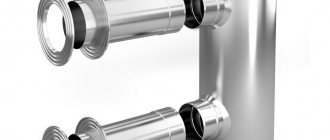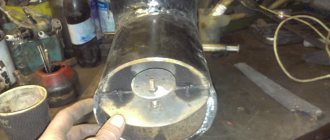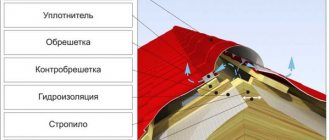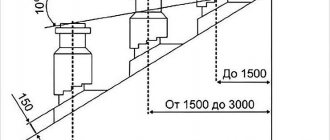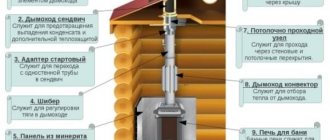Very often people do not know if it is possible to connect several fireplaces or two stoves in one chimney. In addition, they do not know if it is possible to use stoves connected to one chimney on separate floors of the house. And also they do not know for sure whether it is realistic to connect a fireplace and a gas water heater to the smoke channel at the same time. All these questions arise for the reason that today often in a private house there is not only a fireplace and a stove or as many as 2 fireplaces or two stoves, but also fireplaces on separate floors, gas boilers, baths, all kinds of barbecues and etc.
So, not every owner wants to make separate chimneys for all this, because the owner of the house believes that such construction is uneconomical, it will take a lot of brick and time. In addition, such questions torment many for the reason that there is no complete answer to them in SNiPs.
Correct chimney
The fundamental characteristic of a chimney is its material. Recently, chimneys made of acid-resistant stainless steel with the addition of molybdenum have become more and more popular. But for fireplaces and stoves, in which the flue gases do not have high acidity, you can also use good old brick. The optimal shape of the chimney is a cylinder. The more obstacles caused by angularity in the path of smoke, the more difficult it is for it to pass and the more soot will be deposited on the walls.
The dimensions are determined by the diameter and height of the structure.
The first characteristic is calculated based on the power of the equipment, the width of its outlet, the number and nature of obstacles in the path of smoke. The height of the chimney is calculated in accordance with building codes, taking into account the height of the building, the type of roof and the dimensions of neighboring buildings (diagram). When designing, it is important to comply with the requirements for the horizontal sections of the chimney. Their length should not exceed 1 m, because warm air moves vertically, not horizontally. Failure to comply with this requirement will cause poor traction and increased soot deposition in this area.
Connecting a boiler or fireplace insert to a chimney is often associated with the problem of inconsistency in diameters. In such cases, a reduction adapter is used. The area where the equipment is connected to the chimney is treated with a special sealant. The subsequent assembly of the chimney from the pipes is carried out along the course of the condensate, that is, with an upward expansion. This will prevent condensation from reaching the outer wall of the pipe. The brick chimney is assembled in accordance with the project. Each fireplace and each stove requires its own masonry, which is prescribed in layers. The general wish is this: minimize roughness on the inner walls and monitor the tightness of the building.
If there is an old one in the house brick chimney and they want to use it for a gas boiler, a sleeve should be carried out. An acid-resistant steel pipe is installed in the old chimney, leave a technical gap between the new pipe and the masonry. Tees are used when creating most chimneys. They must take into account the angles of removal and provide for revision doors. One of the main requirements of gas boilers is the construction of a condensate outlet. It can be a vertical condensate collector or a tee with a watering can. It is important that the water vapor is properly discharged.
Chimney insulation ensures the safety of both itself and the house. Insulation allows you to speed up the heating of the pipe and reduce the formation of condensation. If the pipe runs near combustible materials, then insulation will save them. When laying the chimney through the ceilings, it is necessary to comply with all fire regulations, depending on the material of the ceiling and the temperature of the pipe.It is better if the surfaces of the walls and ceiling located near the chimney channel are finished with non-combustible materials. Otherwise, they will have to be covered with a metal sheet with a layer of material that does not support combustion. The part of the chimney pipe that goes out into the street must be protected from the wind and additionally fixed. Deflectors, nets and even weather vane provide protection from atmospheric precipitation and debris. However, it must be remembered that such protection is not suitable in all cases. If for a fireplace and stove the hood is the norm, then for gas equipment it is a violation of the security of the system.
On a note:
What weather vane is made of
The weather vane can be made of plastic and even plywood. However, only metal is suitable for serious products. Flat weather vanes are made of stainless steel or steel roofing sheet coated with powder enamel, special paints or polymers. Bulk, as a rule, are made of copper. Forged pieces are distinguished by a special aesthetics. The variety of weather vane is limited only by the imagination of their manufacturers. Traditions also play an important role. In ancient China and Japan, for example, weathercocks were made in the form of dragons, at the same time protecting houses from evil spirits. In Europe, family coats of arms, flags, signs of the zodiac, as well as figurines of angels, fairy creatures, animals, etc. were often hoisted on the roof. Today, like hundreds of years ago, weathercocks with a cockerel - a symbol of vigilance and a guard against theft and fires - are especially popular.
Chimneys (chimneys)
Chimneys are the channels inside the stove array that connect the firebox to the chimney. They serve to absorb heat from combustion products. This heat is then transferred to the entire mass of the furnace, which gives it to the room air. Chimneys have a long, winding path with one or more bends, which is why they are often called chimneys. In order for the chimneys to better suit their purpose, it is necessary to observe the following conditions when installing them: a) the chimneys must be of sufficient size for the free passage of the entire volume of flue gases. Excessive dimensions of the chimney cross-section are impractical, since they increase the outer volume of the furnace and reduce the gas flow rate. Decreasing the speed will impair the heat absorption of the walls.
In addition, with a large cross-section of smoke flows, the movement of gases through them can occur unevenly. It should be borne in mind that more heated gases always tend to rise upward, as lighter ones. With excessive dimensions of the channel, heated gases will flow in the upper part of it, and stagnation of cold air will be observed in the lower part. When gases move, we observe a phenomenon directly opposite to the nature of the movement of water. Due to its bulk density, water always occupies the lower part of the channel during movement, as shown in Fig. 60.
| Fig. 60. Movement along the channel: a - water; b - flue gases. |
When meeting an obstacle — a threshold — water, gradually raising the level, will overflow over it (Fig. 61, a). The gas flow is not delayed at the threshold from below. The hottest jets can pass through the top of the channel. Only cooled gases will linger (Fig. 61, c), forming a "bag" in front of the threshold.
| Fig. 61. Bypassing the threshold: a - with water; b and c - flue gases. |
To block the movement of the hot gas flow, the threshold should be arranged from above; then the hot flow will be delayed, its level will decrease and only part of the cooled gases will overflow from below the threshold and continue the flow, as shown in Fig. 61, b; b) the inner surface of the walls of the smoke circulation, i.e. their length and cross-section should be determined based on the perception from passing flue gases of the amount of heat that is needed to heat the room. In conventional heating furnaces, the time of heat perception corresponds to the time of the furnace and is only 1 72-2 hours, and the duration of heat transfer from the furnace reaches an average of 12 to 24 hours.One of the indicators of the correct use of combustible fuel in a sufficiently developed surface of heat perception by the smoke circulation of a heating furnace is the temperature of the exhaust gases when they exit into the chimney.
A high temperature of the order of 250-300 ° is an indicator of an underestimated surface of the smoke circulation. A too low flue gas temperature (below 100 °) indicates an excessively developed surface of the walls of the flue gas ducts. The consequence of this may be the loss of water vapor on the walls of the chimney and resinous particles, which in the form of brown spots will penetrate the masonry and gradually destroy it.
The normal temperature of the exhaust gases before entering the pipe should be considered a temperature of 120-140 °;
c) the direction of smoke flows and the sequence of movement of flue gases along them should contribute to uniform heating of the entire volume of the furnace and especially its lower part. Basically, this requirement applies to large-sized stoves, where the firebox does not occupy the entire lower part of the massif, as is the case in small stoves. On the contrary, overheating of the upper part of the stove is highly undesirable, since it leads to an increased release of heat into an area that is not felt by the human body;
d) an important role is played by the total length of smoke turns and especially the number of turns, since all this increases the resistance to the passage of flue gases. Furnaces with low gas resistance are preferable, which do not require significant draft force in the chimney.
The main systems of smoke circulation. The direction of the smoke flow inside the stove and the location of the smoke circulation systems are called the furnace smoke circulation system. Distinguish between: channel, channelless and mixed systems. Duct systems provide for the removal of flue gases using ducts. Depending on the direction of the smoke flow, they are divided into multi-turn and single-turn.
In multi-turn systems, the smoke channel consists of vertical and horizontal sections connected in series, along which gases go from the firebox to the pipe, overcoming a large number of revolutions. Diagrams of multi-turn channel furnaces are shown in Fig. 62.
|
| Fig. 62. Multi-turn circuits: a - with vertical channels; 6 - with horizontal channels. |
These furnaces heat up very unevenly, which may be accompanied by the appearance of cracks in the masonry due to its unequal expansion. High resistance during the passage of gases requires increased thrust. The abundance of turns favors the settling of soot, and its cleaning is extremely difficult. Low-speed systems have one lifting channel and one or several lowering channels connected in parallel, that is, the movement of smoke along them goes in the same direction (Fig. 63).
|
| Fig. 63. Low-speed circuits: a - with one downpipe: b - with many downpipes. |
Although the number of vertical ducts (risers) may be the same with the multi-turn circuit shown in fig. 62 a, but the course of flue gases and gas resistance will be different for both schemes. In a multi-turn scheme, gases, before reaching chimney 5, must successively pass four risers and pass nine turns. In a single-turn scheme, the gases, having risen by the first riser 1, diverge under the overlapped furnace to all parallel risers 2, 3 and 4 and, having descended, approach the chimney 5, making one complete revolution. Each portion of gases in this case travels a path in two risers and four turns, so the resistance here is much less than in a multi-turn system. The furnace is heated much more evenly, since the temperature of the gases in all parallel downpipes is the same.
Another very valuable feature of a system with one ascending riser and several parallel descents is the self-regulation of the draft in the drop channels. All sink channels are usually heated evenly.The deterioration of the thrust in any channel leads to a decrease in the volume of gas passed through it, and, consequently, to a decrease in the temperature inside the descent. The volumetric weight of gases will increase here, and heavier gases will descend (fall) faster, i.e., the speed of gas movement in a less heated channel will increase and more gases will again rush into it. The heating of the channel will increase and the passage of gases along all slopes will again become uniform.
It should be noted that there will be no self-regulation of the draft when several parallel risers and one lowering riser are installed. Deterioration of draft in one of the risers will lead to its cooling. The gases in it will become heavier and will begin to lose their ascent rate until they stop altogether. The riser will be removed from the overall operation of the furnace. The system with one riser and variable downpipes is used in modern furnaces.
The disadvantage of the system is overheating of the upper part of the furnace, where the hottest flue gases rush. The gases enter the lower half of the furnace already cooled, so it is heated weaker. The channelless bell system is shown in Fig. 64.
| Fig. 64. Channelless scheme. |
There are no smoke channels here, and a chamber in the form of a cap is laid out above the firebox; the chamber has an inlet to the firebox overlap and a lateral one for removing cooled gases. Combustion products, getting into the bell from the firebox, rise axially up to the stove overlap. Here they diverge to the bell walls and, while cooling down, begin to descend along the walls to the bottom of the bell chamber, and through the second hole are directed into the chimney.
In order to better use the heat of the flue gases, a “nozzle” (in the form of a brick laying in a cage with openings) is arranged inside the hood for free passage of smoke; longitudinal partitions can be made along the height of the bell, without bringing them to the furnace overlap, in the form of wells. The bell scheme is easy to lay and has the lowest gas resistance. Its disadvantage is, as in single-turn furnaces, significant overheating of the upper part of the furnace. To prevent the appearance of cracks (due to overheating), the thickness of the overlap is made in three or more rows of bricks. System with predominant bottom heating (Fig. 65).
| Fig. 65. Scheme with predominant bottom heating. |
It provides the greatest heating to the bottom of the oven. Hot gases from the firebox first go down, heating the lower half of the stove, and then, already partially cooled, rise up. The upper part of the duct system is made either single-turn or in the form of a bell. This reduces gas resistance, which requires constant good thrust. Despite the fact that the value of gas resistance in chimneys with bottom heating is higher than in bell-type or single-turn furnaces, they are still the most rational of all existing ones.
Depending on the location of the direction of the flow of flue gases, smoke flows are distinguished: vertical (standing) and horizontal (lying), lifting and lowering. The transition along the top of the channel from one riser to another is called a pass, the same transition at the bottom is called a subtrack. The cross-section of the chimneys is made in multiples of a brick and half a brick: half brick to half brick; half a brick to brick and brick to brick. It is not recommended to use other sizes; splitting of bricks is done by eye, and inaccuracy of dimensions in practice leads to thickening of the gaps between bricks filled with clay mortar. This is highly undesirable, since the inner surface of the flues should be as smooth as possible and the seams should be thin in order to reduce the resistance to the passage of flue gases.
"Previous table of contents next"
Incorrect chimney
Errors made in the chimney business can be fraught with serious consequences, therefore it is important to comply with all building codes and requirements.Some consequences of improper design will lead to costly rework, while others can provoke fire or poisoning by combustion products.
Experts do not recommend using materials that are not intended for these purposes, such as asbestos and aluminum. If we are talking about a gas boiler, then a brick is not the best option. An acidic environment can destroy it in a few years. And alteration of the chimney is not the most pleasant prospect. Changing the diameter of the chimney during operation without the involvement of a specialist will at least reduce the efficiency of the system. The load on the base of the chimney should not exceed a value that can lead to the destruction of the building. Combining several installations into one chimney network is possible only if there are confirming engineering calculations made by a specialized specialist. The most dangerous mistakes are:
- insufficient thermal insulation of the chimney, leading to charring or fire of adjacent materials;
- use for smoke removal of ventilation ducts or combining protection of two ducts with one fungus. This error causes the destruction of the ventilation system, as a result of which smoke enters the house;
- modification and unauthorized repairs without preliminary calculations.
The device of a technically correct and functional chimney is not an easy task. Each case has its own nuances and requires consultation with a specialist, at least at the design stage.
Features of smoke removal
It is worth remembering that you cannot connect a gas boiler and a wood-burning fireplace to the same pipe. If the stoves are located on different floors, then the chimney must be built in such a way that the exit of combustion products from the upper floor is carried out first through a dedicated passage that runs next to the main one. In this case, the height of the partition must be at least one and a half meters. This will heat two stoves at the same time.
It is worth remembering that first the furnace that is large is ignited, which will help to normalize the craving. The cross-section of the chimney at the point where the two outlet ducts are connected should be almost twice as large. To exclude the possibility of smoke from one stove to another, you should make not one, but several dense dampers, which ensure a reliable shutdown of the pipe.
According to the rules for the construction of stoves, if they are located on different floors, then it is not recommended to combine them into one chimney. This is done when they are located at the same level. Install two stoves in one pipe with the expectation that its length should be equal to 5 meters, if you count from the grate. This is necessary for normal smoke output.
Due to the fact that the draft in the lower stove will be better, it is worth making it larger and starting to heat the house from it. Only after the fire flares up in it, the second is activated.
Chimneys for stoves
SNiP Heating, ventilation and air conditioning - fundamental rules and instructions for the design of a stove heating system. He talks about all the requirements for both the stove and the chimney. So, one stove should be provided for heating no more than three rooms located on the same floor. In two-story buildings, bunk stoves with separate fireboxes and chimneys for each floor are allowed. The use of wooden beams in the floor between the upper and lower tiers of the stove is unacceptable. In addition, you cannot:
- arrange artificial exhaust ventilation, not compensated by the corresponding supply;
- remove smoke into ventilation ducts by installing ventilation grilles on the smoke ducts.
Furnaces should generally be placed against interior walls and non-combustible partitions.Flue ducts can be placed in external walls made of non-combustible materials, if necessary, insulated from the outside to avoid condensation of moisture from the exhaust gases. In the absence of walls in which smoke channels can be placed, stacked or main chimneys should be used to remove the smoke. For each stove, as a rule, a separate chimney or a separate channel is provided. It is possible to connect two ovens located on the same floor to one pipe. When connecting two pipes, it is necessary to provide for cuts with a thickness of 0.12 m and a height of at least 1 m from the bottom of the pipe connection. And also a sequential installation for tight valves, and on the channels of furnaces operating on coal or peat - one valve With a hole with a diameter of 15 mm.
Chimneys must be designed vertically without ledges.
And at the base of pipes made of clay bricks with walls at least 120 mm thick or heat-resistant concrete with a thickness of at least 60 mm - provide pockets with a depth of 250 mm with holes for cleaning, bricked up on the edge using clay mortar and equipped with doors.
Allowed deviations of pipes from the vertical by 30 °, with a slope of no more than 1 m.
Inclined sections should be smooth, with a constant cross-section and an area not less than the cross-sectional area of the vertical sections.
Chimneys on buildings with roofs made of combustible materials must be equipped with spark arresters made of metal mesh with holes no larger than 5 × 5 mm. Constructions made of flammable or hardly combustible materials adjacent to stoves, chimneys and ventilation ducts located next to chimneys must be protected from fire with cuts made of non-combustible materials, and the gaps between ceilings, walls, partitions and cuts must be filled with non-combustible materials. The distance between the top of the furnace ceiling and the protected combustible ceiling depends on the nature of the combustion and is 250-700 mm. With an unprotected ceiling - 350 and 1000 mm. For a metal oven with an insulated floor - 800 mm. with non-insulated - 1200 mm. The distance from brick or concrete chimneys to combustible and hardly combustible parts of the roof should be at least 130 mm, from ceramic pipes without insulation - 250 mm. and for thermal insulation with non-combustible or hardly combustible materials with a heat transfer resistance of 0.3 m2оС / W — 130 mm.


What are the special features of flue gas discharge into one pipe?
Naturally, such a smoke exhaust has its own characteristics, which we will talk about in more detail. In particular, as already noted, when stoves connected to the same chimney are located on different floors, it is better to fire them separately. Also, you cannot install a gas boiler and a wood-burning fireplace in the same chimney. After all, this type of device must necessarily have their own chimneys. But at the same time, you can still install in one shaft, a chimney, a pipe for a boiler and ventilation.
However, even here they must be completely separated by special hermetic partitions. Ventilation pipes and chimney should never be shared. And the tunnel fireplace insert, which is located between the rooms, is a separate fireplace connected to such a chimney device with two portals. If it is planned to connect two hearths located on the same floor to a common chimney, then it is important to understand that there must be a distance of at least one meter between them. In addition, in this case, it is also necessary to expand the section of the chimney. It is also necessary that two such devices be fired with the same fuel. So, their joint exploitation should not bring any difficulties. But the more powerful device needs to be melted first.
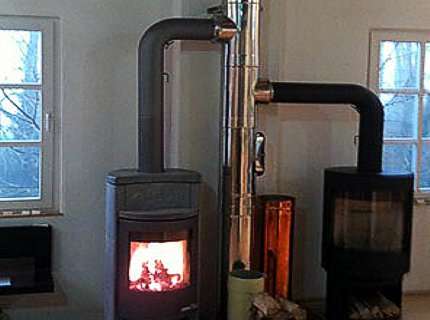

Thus, it should be said that when connecting two hearths to one chimney, a lot of difficult questions arise.In particular, you need to think over all the connection options, take care of proper air exchange, a device for high-quality ventilation, regulation of draft and combustion. Due to such a large number of questions, we can safely say that it will be easier to build its own chimney for each hearth. This way you will spend less energy and make everything more secure.
Article rating:
Is it possible to bring pipes from two sources at different heights and from different sides into a single-pass ceramic chimney, for example, Ton. For example, from a heating stove and a water heater with the condition that they will not be heated at the same time? Or do you still need a two-pass chimney in this case?
You can, but with serious restrictions:
- Gas heat generators should only have separate chimneys.
Chimneys for fireplaces
The requirements for a chimney for a fireplace have something in common with the requirements for stoves. The fuel is the same, and the principle of operation of the systems is similar. For example, fireplaces can be used for heating. If we are not talking about large-scale heating, you can limit yourself to a radiator pipe - a special device made of plates that increase the heat transfer area. It is possible to regulate the intensity of combustion by controlling the air exchange. Alternatively, a gate (damper) is used. As in other chimney designs, the smoke from the fireplace should be removed in the simplest possible way. It is better if it is a straight vertical chimney (more than 6 m high) or more complex, but with bends with an angle of less than 45 °. If it is necessary to use an elbow, a tee is installed to facilitate access for subsequent cleanings. In addition to the shape, the place of passage of the chimney and the corresponding degree of thermal insulation are important. The smoke heats up the chimney, which means that wall materials and ceilings need to be protected from fire. If a sandwich chimney (multilayer) passes near plastic or wood, they are insulated with a basalt-based material. The place where the chimney passes through should also be protected from the cold. For example, it is not allowed to place a single-wall pipe (made of stainless steel with a thickness of 0.5-0.6 mm) outside. Protect the chimney with a fungus or weather vane installed at the end.


Chimney for solid fuel boilers
Heating boilers operating on solid fuels are close to both stoves with fireplaces and gas boilers. With the former, they are united by one of the possible types of fuel (wood) and the frequent need for cleaning from ash, with the latter, by the similarity in the distribution of heat energy for heating. The connection diagram for a solid fuel boiler is generally suitable for other systems. Knowing their requirements, you can adapt this scheme, for example, remove the deflector when it comes to gas equipment.


Chimney for baths and saunas
Sauna firebox and chimney need thermal insulation. The ceilings are insulated by analogy with the described chimneys, and the wall material near the firebox is covered with metal sheets. The excess heat generated by the chimney can be used for business. A popular option for increasing efficiency is a metal mesh into which stones are poured. They envelop the hot chimney and heat up. Burning intensity regulator can be another useful addition. The chimney draft must maintain combustion at the required level, without releasing all the heat to the street, and create a temperature of 70-80 ° C in the room. It is clear that smoke entering the steam room is out of the question.


Is it possible to output two stoves into one chimney
It is important to understand that the gate valve will not help in any way here. In the second situation, only the stove on the second floor is in operation. Here it is already necessary to prevent air from sucking in from below and the ingress of smoke into the first fireplace. The third option provides for the possibility that both fireplaces cannot be operated.Since in a situation where the chimney is not blocked, air exchange of rooms on other floors will pass through it, which is not allowed. The fourth option provides for the operation of two fireplaces. But at the same time, in theory, the lower fireplace will work normally, and with the upper one there will be problems such as smoke, poor draft and poor flame regulation.
By using dense dampers, you prevent the possibility of smoke entering one of those rooms where the fireplace or stove is located. However, in this case, it is impossible to exploit two centers at the same time. When operating two fireplaces, you will get a full room of smoke and poor draft in the second fireplace. And the most important issue here is the regulation of air exchange in the whole house.
Chimney for gas boilers and water heaters
Few of the developers study building codes and understand the "classic" requirements for exhaust ducts in general and for gas boiler ducts in particular. Practice shows that even the fundamental requirements and norms are not observed. But when building or repairing, first of all, technical issues must be resolved. The chimney for a gas boiler must:
- Comply with SNiPs
- Have your own channel - It is allowed to connect two devices to one channel, but at a distance of at least 750 mm;
- be sealed. Carbon monoxide leakage is unacceptable (laying a brick chimney does not guarantee reliable gas insulation);
- Be resistant to condensation. Modern high-performance boilers produce 1-3 thousand liters of condensate per year. Due to the low temperature of the outlet gases (it rarely exceeds 100 ° C), the condensate does not evaporate, but flows down the walls of the chimney, penetrating into the brick and destroying it;
- Do not impair cravings. The ideal cross-section for any exhaust duct is round. Rough, uneven bore of the canal impairs traction. In addition, the cross-section of the duct must be no less than the cross-section of the gas outlet pipe on the connected device. For example, if the cross-sectional diameter of the outlet on a gas boiler is 150 mm, then the cross-sectional diameter of the exhaust duct must also be at least 150 mm; but be warm. There is less condensation in a warm duct;
- Go straight into the sky, without visors and covers.
All these requirements are easy to take into account at the stage of construction or repair, but it is very difficult to correct shortcomings during operation.
COAXIAL FLUE
It is easy to guess that the smoke discharged to the street consists of air taken from the room. Accordingly, its stocks must be replenished, for example, taken from the street. This means that the supply air will be fresh, but cold. Some systems solve the problem of removing useful air. Boilers with forced draft and built-in fan are equipped with a coaxial chimney, which compares favorably with pipes of many meters. This chimney has two pipes. Fresh air from the street enters one of them to maintain combustion, and smoke comes out of the other. The system is completely closed, that is, the air from the room does not participate in the operation of the boiler. Air supply and air discharge are not necessarily carried out through a single chimney, divided into two parts. There are also models with separate pipes. Often, coaxial chimneys are horizontal, although a vertical outlet is also made if necessary.


What problems can arise?
During the construction of two stoves and combining their chimney, the owners of country houses are faced with the following difficulties:
- smoke on the upper floor,
- weak cravings,
- the inability to melt the upper furnace due to the small height of the pipe.
The first problem can be solved by creating two separate chimneys in the pipe. Thanks to this, smoke will be excluded, as well as the normal draft will be maintained during the operation of the upper furnace. It is also possible to bring the upper chimney to the main pipe at an angle.
Smoke can also be associated with irregularities in the pipe.If during the masonry the builder allowed the appearance of protrusions or, conversely, an increase in the cross-section of the passage, this may affect the movement of combustion products. When it enters a section of a pipe with irregularities, the smoke begins to change its trajectory and form “eddies”. As a result, he can get into the second connected passage and further into the room.
When building two furnaces, you should think carefully - is it really necessary to connect them into one pipe. If possible, then the venture should be abandoned. But if you follow the rules for laying the chimney, there should be no problems.
How to clean the chimney?
It is considered that the pipe should be cleaned if the soot layer on its inner surface is thicker than 2 mm. If the soot deposits are very dense, a scraper should be used for cleaning in the first step. Then comes the hard brush with a long multi-link handle. The length of the latter is changed in accordance with the course of cleaning - from the top of the chimney to the bottom. So that as little soot gets into the room as possible, the furnace hole is covered with plastic wrap or a thick sheet during cleaning. Additionally, we advise you to prevent drafts and cover the furniture. Chemicals are also used for cleaning. Most often these are powders or "miracle logs". Burning in the firebox, such substances emit a non-toxic gas, under the influence of which the soot lags behind the walls of the chimney. It should be borne in mind that it is very difficult to clean a heavily polluted chimney with "chemistry"; it is best to combine chemical and mechanical cleaning. The people recommend once a year to heat the stove or fireplace well with aspen wood. When aspen burns, the flame reaches a great height and burns out soot from the chimney. However, this advice is only suitable if not too much of it has accumulated in the chimney. Otherwise, a fire is possible. In addition, you can burn potato peelings in the furnace: the steam generated during this effectively fights off soot deposits.
Can two ovens be connected to one chimney?
In theory, such a plan can be implemented, but in fact, all the same, systems of this type are capable of functioning normally only under certain conditions, namely, when:
- the most suitable height and the structure of the chimney itself;
- larger section for the chimney channel;
- the presence of several dampers for absolute blocking of the chimney channel;
- the implementation of the kindling of fireplaces in sequence;
- correct draft control in both of these fireplaces.
Now I would like to consider the possible operating conditions for a pair of ovens on different floors. So, in the first case, the furnace firebox is provided exclusively on the first floor. At the same time, it is important to prevent the penetration of flue gases into the room where the second stove or other source is located.
Chimney height
The chimney must rise at least
- 0.5 M ABOVE the roof ridge when the pipe is located at a distance of up to 1.5 m from the ridge;
- Be not lower than the ridge of the roof when the chimney is located at a distance of 1.5 - 3 m FROM THE RIDGE;
- Be not lower than a line drawn from the ridge down at an angle of 10 ° to the horizon, when the chimney is located at a distance of more than 3 m from the ridge;
- For flat roofs, a chimney above 1 m is required.
- Regardless of the angle of inclination of the roof, chimneys that are 1.5 m higher than its level must be additionally fixed with braces on the bracket


Stove and fireplace pipes
There are several aspects to consider when calculating pipe heights. The higher the chimney, the better draft it provides, but passing through the high chimney the gases cool and form condensation, which leads to a decrease in draft and smoke in the room.
To ensure reliable draft, the chimney must be at least 5 m high. And if for some reason this cannot be done, use an electric smoke exhauster. The minimum height of the upper part of the chimney above the ridge of the roof depends on how far the axis of the chimney is from the ridge.
In this case, the pipe in any case must rise above the roof surface by at least half a meter.
So, if the axis of the chimney is at a distance of up to 1.5 m from the ridge, then the pipe should rise 0.5 m above the ridge.If the distance from the chimney to the ridge is from 1.5 to 3 m, then the upper part of the pipe can be flush with a skate. If the distance from the pipe to the ridge is more than 3 m, it is allowed to erect a chimney below the ridge of the roof at an angle of 10 degrees to the horizon.
Not everything is simple with the internal section of the chimney, which must correspond to the dimensions of the firebox. The smoke does not have time to come out through a too narrow pipe, and the stove begins to smoke. Gases pass through too large a cross section slowly, cool down quickly, which leads to the settling of condensate and a decrease in thrust.
Pipe characteristics
The material for the construction of the chimney must ensure the high temperature resistance of the future chimney, because it must withstand a constant temperature of + 500 ° С, and also withstand heat up to +1,000 ° С for half an hour. Despite the fact that the flue gases passing through the pipe are heated to a temperature not exceeding + 300 ° C, a margin of thermal resistance is necessary, since soot can ignite inside the chimney, the combustion temperature of which is significantly higher.
Also, according to the requirements, the outer side of the pipe should not heat up more than + 90 ° С, and in case of contact with flammable structures - more than + 65 ° С. Among other things, the upper part of the chimney facing the outside must withstand winter frosts, and the chimney material must be resistant to the chemical composition of the flue gases.
The traditional chimney has long been built of bricks. This material fully complies with the requirements for chimneys. In chimney chimneys, the temperature is higher than in stove ones, and reaches + 400 ° C, therefore it is recommended to build chimneys of naminov from heat-resistant bricks. However, furnace work requires skill, and the considerable weight of the brick pipe leads to the need for increased strength of the foundation under the fireplace or stove. All this often forces us to look for alternative options for materials for the manufacture of fireplaces and chimneys.
Sometimes asbestos-cement pipes are used for this purpose. They are inexpensive, lightweight and easy to install. However, asbestos cement also has disadvantages: at high temperatures, pipes can crack, and insufficient heat resistance and rapid heating of the surface contribute to the creation of a fire hazard. Therefore, asbestos-cement pipes are more often used in small country houses, summer kitchens, when arranging areas for barbecues and barbecues.
Steel pipes are far from perfect either. When installing such a chimney, it is necessary to insulate the pipe surface with a non-combustible material, since the metal heats up so much that it can cause a fire. Abundant condensation, leading to corrosion, makes black steel pipes short-lived, they fail relatively quickly and require replacement. Stainless steel is resistant to corrosion and has higher strength characteristics, but pipes made from it will cost significantly more.
Sandwich Chimneys
Sandwich chimneys are becoming more and more popular. Manufactured in the factory, they meet the required requirements for resistance to high temperatures and oxidation.
Manufacturers produce reliable and safe sandwich pipes of various diameters, which allows you to choose the right option. They are easily assembled from meter lengths and assembled right on the spot.
Due to their three-layer structure, such pipes have excellent performance and at the same time are lightweight, which not only facilitates the installation process, but also allows you to significantly save on the foundation for a fireplace or stove. The inner side of stainless steel is covered with heat-insulating material, which is covered with galvanized steel on top.
With undeniable advantages, sandwich pipes also have disadvantages, among which the main ones are considered to be high cost and imperfect tightness due to the composite structure of such chimneys. It is no coincidence that the manufacturer, as a rule, is limited to a 10-year warranty period, after which one should be puzzled by the replacement of the pipe.
In this regard, modular chimneys are favorably distinguished by a longer service life (about 30 years), not differing too much from sandwich pipes in price. The modular pipes produced at the factory meet all the necessary requirements, which are provided by a three-layer structure: a layer of thermal insulation is also laid between the inner refractory side and the outer shell made of lightweight concrete.
Decent Chimney Place
The most effective way to locate the chimney is to place it in one of the inner walls. Then the heat of the stove will work to the maximum for heating the room, and the vertical chimney will provide the best draft.
The location of the chimney on the outside greatly facilitates its installation, since the troublesome removal of the pipe through the ceilings and the roof will not be needed. In addition, this option is less fire hazardous. The disadvantages of this placement of the chimney are the not too presentable appearance of the pipe, the need for additional space and the mandatory thermal insulation of the entire outside part in order to avoid its cooling and condensation.
TOOL FOR MASTERS AND MASTERS, AND HOUSEHOLD GOODS VERY CHEAP. FREE SHIPPING. THERE ARE REVIEWS.
Below are other entries on the topic "How to do it yourself - a householder!"
- Installing a ceramic chimney in the wall Ceramic chimney for home - ...
- Chimney installation Volcano - my reviews An important matter is a chimney More often ...
- Do-it-yourself stove in a steel pipe bath - drawings + photos Steel stove in a bath with your own ...
- Installation of an external chimney with your own hands (+ photo) Installation of an external chimney With an external chimney you can ...
- The device of a sauna stove-heater (+ drawing) Homemade stove-heater for a bath and ...
- How to strengthen a sandwich pipe (chimney) with your own hands Protecting the chimney from the wind It is necessary ...
- Which chimney is better - the FURNER's advice WHAT A CHIMNEY SHOULD BE BUSINESS - ...
Subscribe to updates in our groups and share.
Let's be friends!
With your own hands ›Stoves, fireplaces, barbecue› How to make the right chimney for a stove, sauna, fireplace, boiler. Coaxial chimneys.
